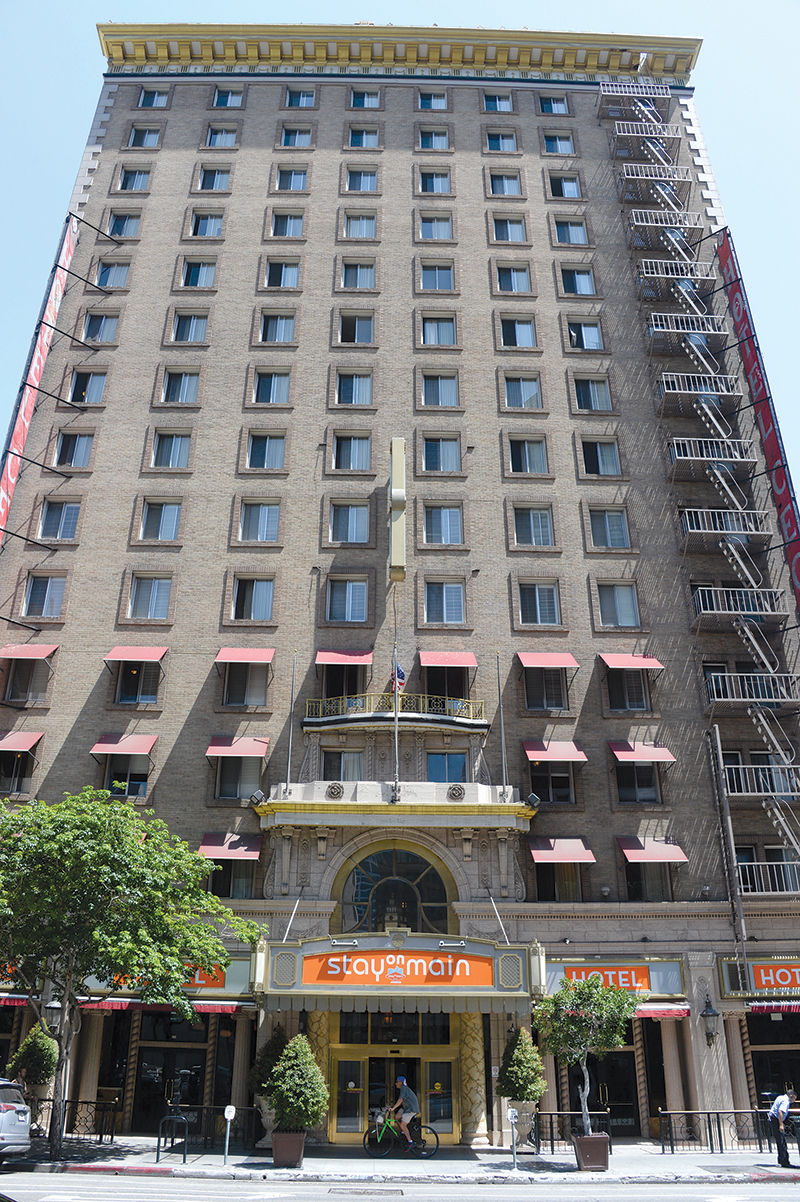by Nicholas Slayton, Los Angeles Downtown News
DTLA – A major overhaul is being planned for the Cecil Hotel. It could bring a bright future to a large property that has lagged as the Historic Core has transformed around it.
New York-based Simon Baron Development has signed a 99-year lease for the 15-story building at 640 S. Main St., which currently operates as the Stay on Main hotel. The company plans to turn the property into a mix of hotel room and apartments, including a low-income housing component. It marks the first California project for Simon Baron, which has mainly worked in New York, building new residential towers and converting older properties in developing neighborhoods into upscale living spaces.
The company is paying $15 per square foot per year for the roughly 199,000-square-foot Cecil, which works out to just under $3 million annually.
Simon Baron’s lease for the 600-room, 82-year-old property is the second major transaction involving the Cecil in recent years. In 2014, developer Richard Born bought the building for $30 million. He announced plans to turn the structure, which is just south of Main Street’s Pacific Electric Lofts, into a hotel aimed at young professionals.
In an interview, Matthew Baron, the president of Simon Baron Development, said the company had not been aiming to expand into California. Simon Baron has worked with Born, and during business discussions the idea was broached. Baron and his partner, company CEO Jonathan Simon, eventually toured the property and the neighborhood.
Baron said he found the Cecil Hotel brimming with potential, and pointed to the elaborate lobby and design details throughout the building. The rebounding Historic Core also appealed.
“My partner and I walked around Downtown L.A. and we could see the change of what’s happening in the area. It was very tangible to us,” Baron said. “It checked the types of boxes of what we do out East.”
Exact plans and designs are still being determined, and while the goal is to cater to Downtown’s young professional population, Baron said the building will not be turned into the type of luxury apartments that have opened across the community. He said extensive work will be done to update the building’s infrastructure, and that new amenities will be added.
Baron said he expects the building will have slightly more apartments than hotel rooms. He said the renovation budget is still being determined, and the goal is to start work in 2017.
The Cecil is one of the last large and relatively untouched buildings in the Historic Core, according to Bruce Baltin, senior vice president of the hotel industry consulting firm PKF Consulting. Baltin noted that hotel developers are particularly interested in real estate along Broadway, Spring and Main streets due to the neighborhood’s walkability and history. He said the turnaround of the Ace Hotel at 929 S. Broadway proved that a major hotel undertaking in the area could be profitable.
Highs and Lows
The 1924 building has had ups and downs. It was originally designed by architect Loy Lester Smith, and was noted for its Neoclassical exterior and an intricate and elegant lobby, according to Linda Dishman, president of preservationist organization the Los Angeles Conservancy.
“When it was built, it was one of the elite Downtown hotels,” Dishman said.
Like much of Downtown, the Cecil’s fortunes turned after World War II, when many people and businesses left the community. The Cecil shifted toward a lower-income clientele and started to decline.
The hotel has counted its share of infamous guests and incidents. Richard Ramirez, who would come to be known as the serial killer the Night Stalker, lived in the building during the mid-1980s. Another serial killer, Jack Unterweger, stayed there in 1991 while committing murders.
In January 2013, a 21-year-old Canadian tourist staying in the building went missing. The following month, her body was discovered in the building’s rooftop water tank. How she got there and how she died remains unclear. Her death is part of what inspired a recent season of the FX television show “American Horror Story.”
Two years before Born bought the property, it almost went in a different route. In 2012, the County of Los Angeles worked with the then-owner to turn the Cecil into a permanent supportive housing complex holding about 400 formerly homeless individuals. Many neighborhood residents protested, citing the large number of low-income housing complexes already in the area. Eventually the plan was halted.
Baron said his team is not deterred by the property’s past. Rather, he thinks the Cecil is well positioned as the community transforms.





